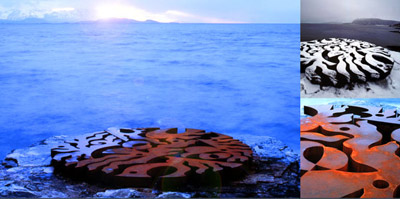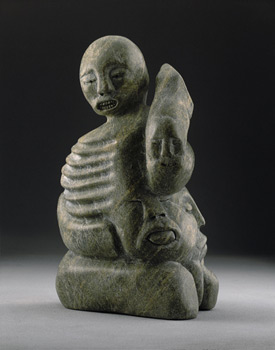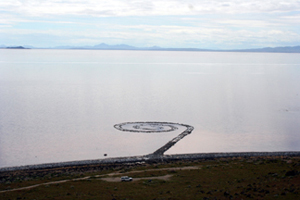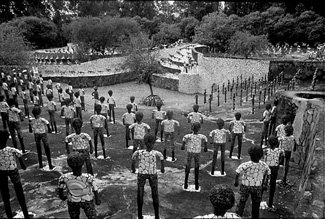art that excites
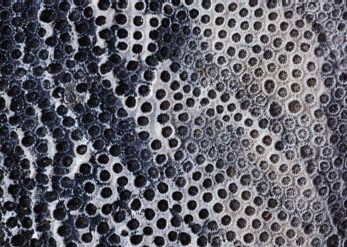
Brad J. Goldberg: Coral Eden
When I see art that excites me, that draws a reaction out of me, that makes me really take notice, that stirs my emotions, it becomes a memorable and almost a spiritual experience. And when I see or read about viewers who react this way to art, I’m extremely gratified.
Bill Knight, one of my commenters (who should have a blog), often writes with this kind of excitement when he shares his discoveries of art works on the web. Recently he wrote in the comments in one of my posts about the work of Brad J. Goldberg. Here’s what Bill wrote:
I’d like to share with you a site just put up by a very thoughtful and accomplished artist working in stone. It is interesting to note that he does not try to document his work exhaustively, but rather he gives fragmentary glimpse combined with a paragraph of his thoughts and motivations. I think he is saying, “See the work in person!”
You might especially enjoy his photographs of stonework around the world. As he says in his “Thoughts” section, he is very world, cultural and social-minded. Interesting man. He does some very large works, often with the help of large machines and factories, but however large the work, he always finishes the pieces with his own two hands.
The guy is incredible. What a career. I think his son has done the web-site though I am not sure. It is the perhaps the best sculpture site I have been to with such great visual documentation from pencil drawing to boulder outcrop to finished artwork. He is only fifty or so. What a career. I don’t know of anyone like him when it comes to creating public space with stone.
[…] it’s humbling, awsome, and expansive. He makes the possibility of what stonework can do and can be. He seems to always be looking outward. Rake lines of a Japanese sand garden turn up in a large urn. Circuit chips make an appearance as well as handprints as seen in ancient rock art paintings and chippings. His evocation of coral is brillant. Stonework does not usually bear such explicit textural connotation and signiture of organic intelligence. Overiding all is a sharp situational and social awareness of stagecraft and elocution. Clarity is achieved. Simplicity is molded from sensibility.
From Brad J. Goldberg’s site:
Brad Goldberg is an artist whose work is centered on developing a fusion between sculpture, landscape, urban design, place, culture, and community. It is an art that aspires to escape categorical definitions, restrictions or limitations Each new project generates a unique response encompassing the total aspect of a specific place or circumstance. This response may include sculpture, architecture, landscape, water, furniture etc.”
“As artists, our life orientation is focused on the creation of beauty and a search for meaning. We strive to create work that abounds in hope, creates a sense of continuity, belongs in time and to a place, and responds to people’s innate need for beauty, soul, and community. Our lifestyle, as well, is a reflection of these ideas, focusing on our love of family, friendship, the integrity of our work, a strong sense of belonging to a place, a sense of our heritage as people, and the discovery of new ideas and places that fuel the next steps in our creative ventures.
Do look through the Portfolio of projects. My favourites are Coral Eden, Place of Origin, and Liturgy. Click on the little arrow next to the the project title to see more views of the works in progress.
Thanks, Bill, for finding this artist’s website and sharing your excitement.

